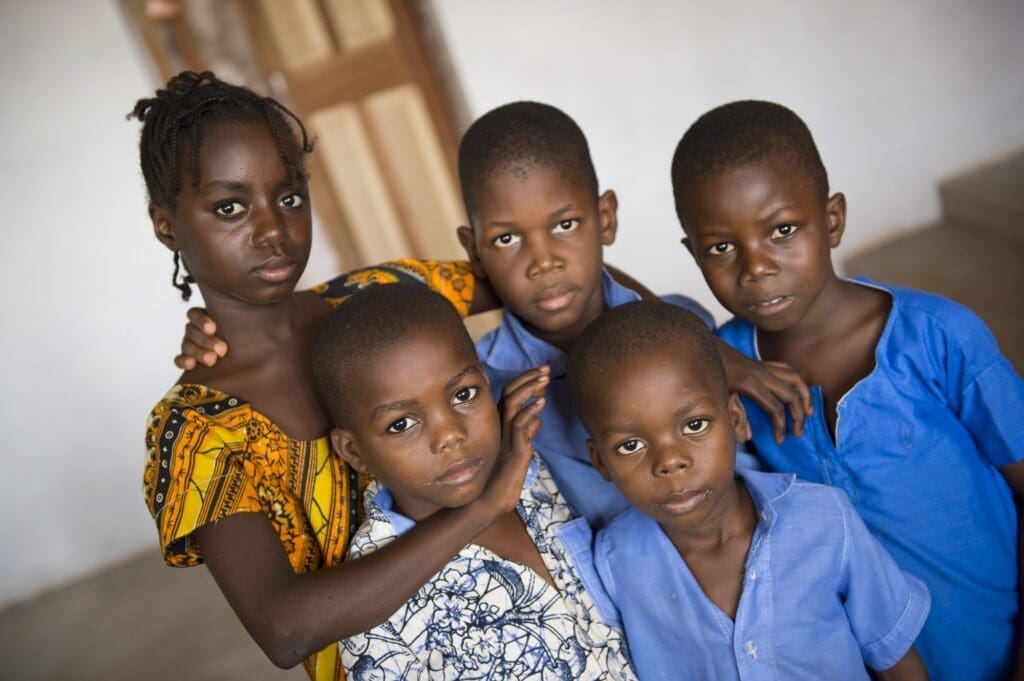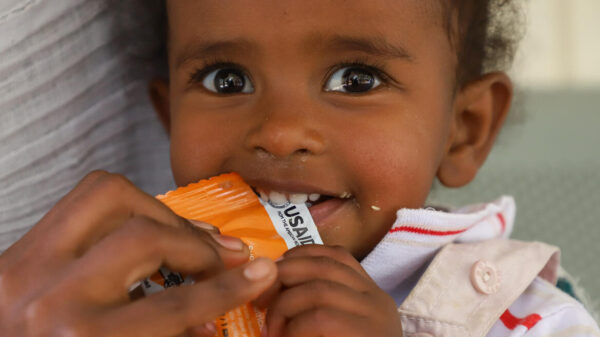
Central African Republic: Child Malnutrition Rates Soar as Violence Rages
UNICEF and the United Nations World Food Programme warn that more than one in three health districts in the country are now on alert for a child malnutrition crisis due to recent violence.
BANGUI – At least 24,000 children under five across 14 of the Central African Republic’s 35 health districts are at risk of severe acute malnutrition following the recent spike in violence across the country – UNICEF and the U.N. World Food Programme (WFP) warned today. Out of these 14 districts, which are now on alert for a child malnutrition crisis, six currently have no resources or capacity to respond to children’s acute needs.
The two UN agencies also noted that violence and insecurity are exacerbating population displacement, hindering humanitarian access and causing food prices to rise.
This adds to the negative impact that the COVID-19 pandemic continues to have on children’s nutrition security in the country. This year, at least 62,000 children under five are expected to suffer from severe acute malnutrition, a 25% increase from 2020.[1]
“The situation is extremely concerning,” said UNICEF Representative in CAR, Fran Equiza.
“Without urgent access to the care they need, severely malnourished children are at imminent risk of death. We must be able to safely reach all children in need as soon as possible, particularly in the areas most affected by recent violence, where families have been forced to flee and access to food is scarce.”
“The spiraling nutrition situation is a consequence of recent post-electoral violence and needs an immediate and adequate response to save lives and avoid catastrophe,” said U.N. World Food Programme CAR Country Director Peter Schaller.
“We cannot sit back and watch this catastrophe unfold before our eyes. We need safe access to these children, girls and women to prevent the worst,” Mr Schaller added.
Despite growing insecurity, UNICEF and U.N. World Food Programme teams on the ground are intensifying efforts to reach the most vulnerable children and mothers, by pre-positioning nutrition supplies to ensure there is no disruption in the delivery of aid as well as deploying mobile clinics to bring health and nutrition support to remote and displaced communities.
“We are renewing our call to all parties to the conflict to allow UNICEF and its partners safe and unfettered access to the most vulnerable children,” added Mr Equiza.
In 2021, UNICEF is seeking $15.2 million to scale up its nutrition response and provide almost 50,000 severely malnourished children under five with lifesaving treatment and reach more than 800,000 women and children with measures to tackle both acute and chronic malnutrition, including feeding counseling and Vitamin A supplementation.
As of today, programs remain critically underfunded, with only 30% of needs – $4,500,868 – covered since the beginning of the year.
The U.N. World Food Programme will continue the prevention and the treatment of moderate acute malnutrition among children aged from six-59 months, and pregnant and breastfeeding women. However, the organization is facing a serious funding shortfall and needs $9 million for its nutrition response through December 2021.
# # #
About UNICEF | UNICEF works in some of the world’s toughest places, to reach the world’s most disadvantaged children. Across 190 countries and territories, we work for every child, everywhere, to build a better world for everyone. Follow UNICEF on Twitter and Facebook.
About WFP | The United Nations World Food Programme is the 2020 Nobel Peace Prize Laureate. We are the world’s largest humanitarian organization, saving lives in emergencies and using food assistance to build a pathway to peace, stability and prosperity for people recovering from conflict, disasters and the impact of climate change. Follow WFP on Twitter @wfp_media and @wfp_WAfrica.




